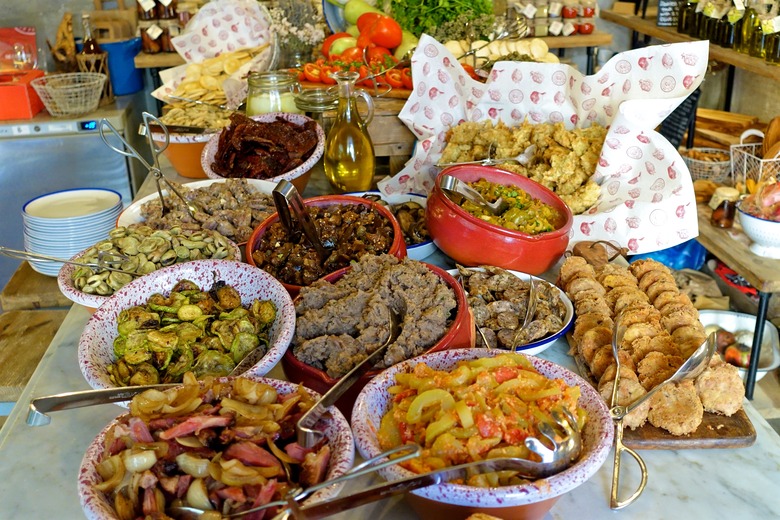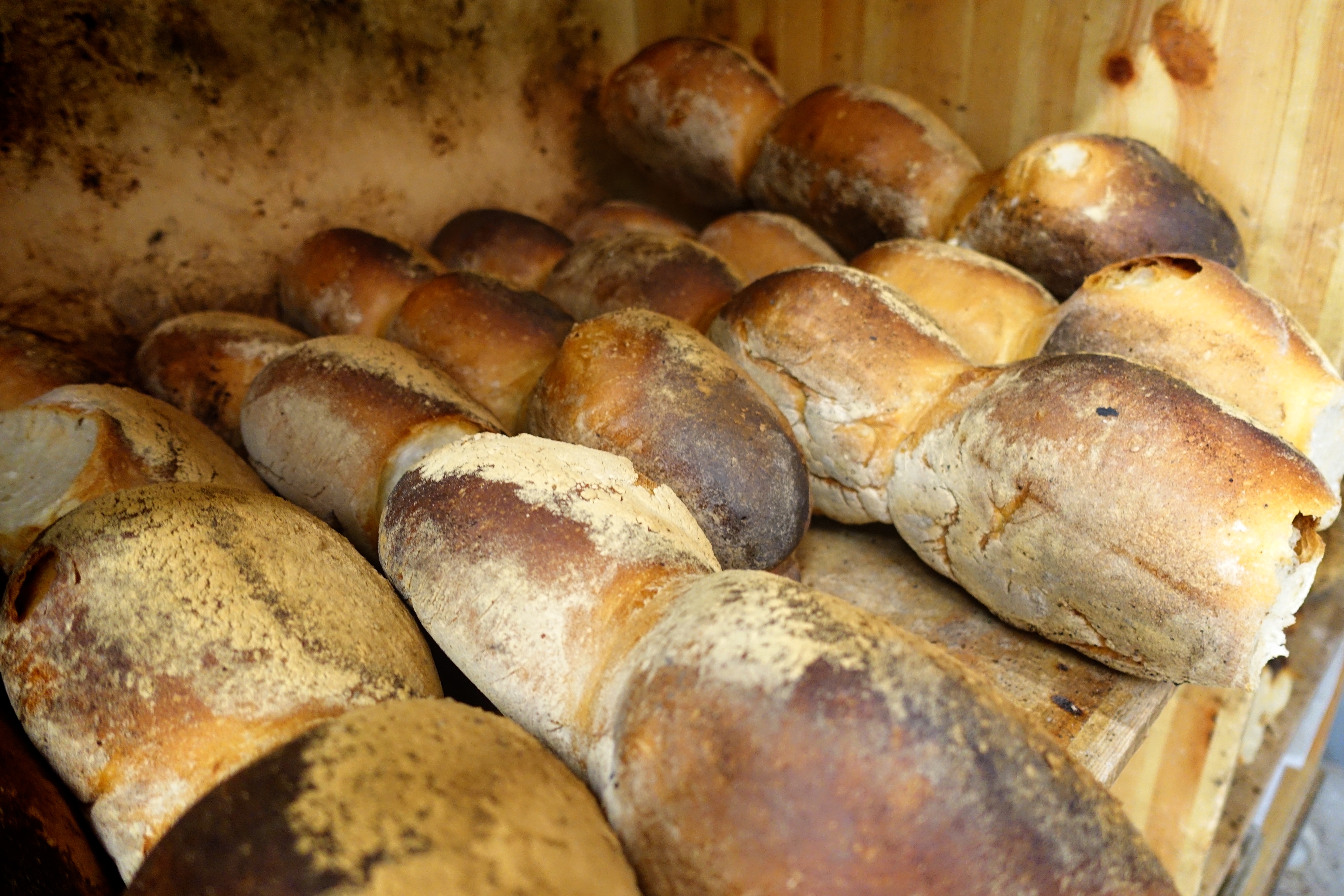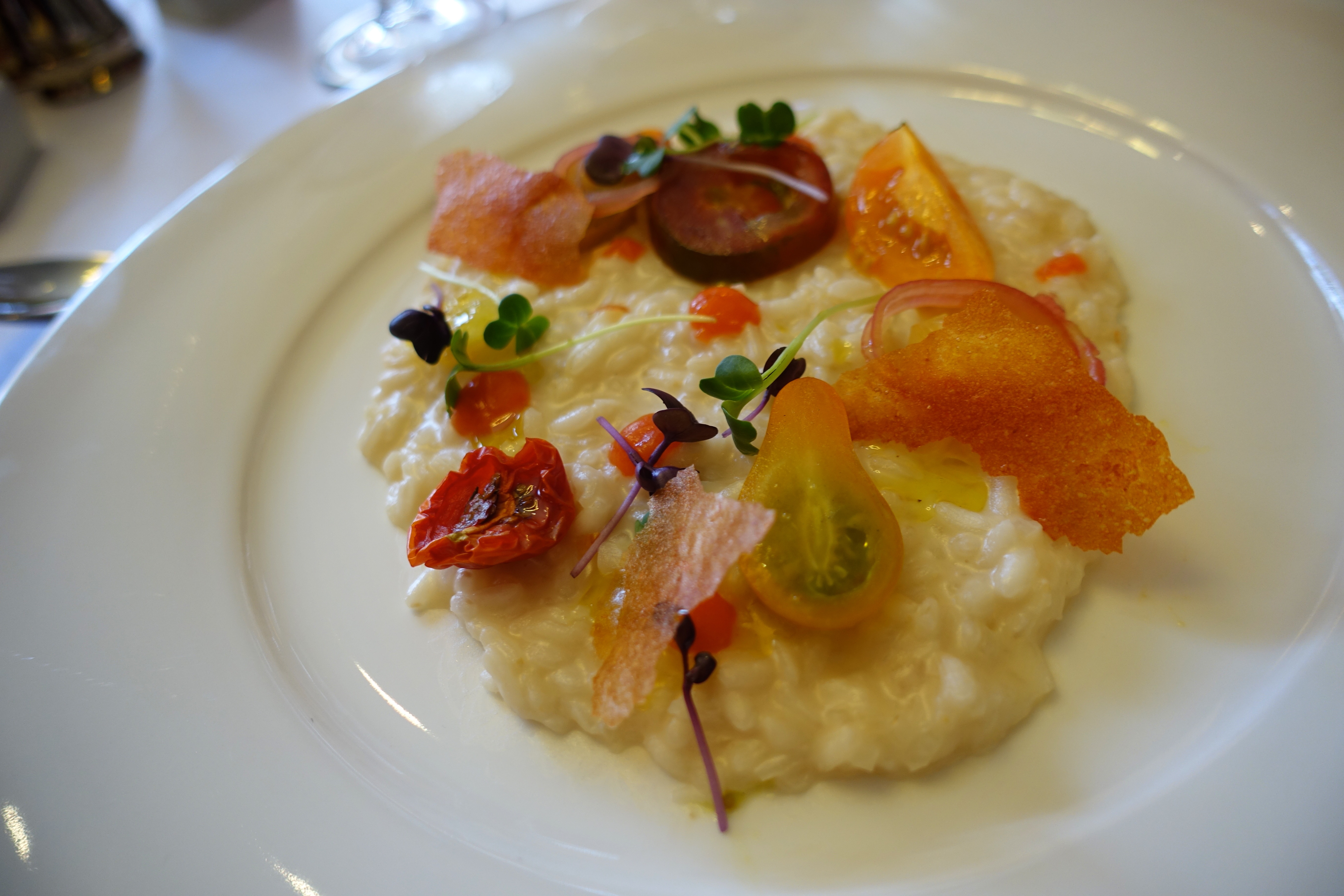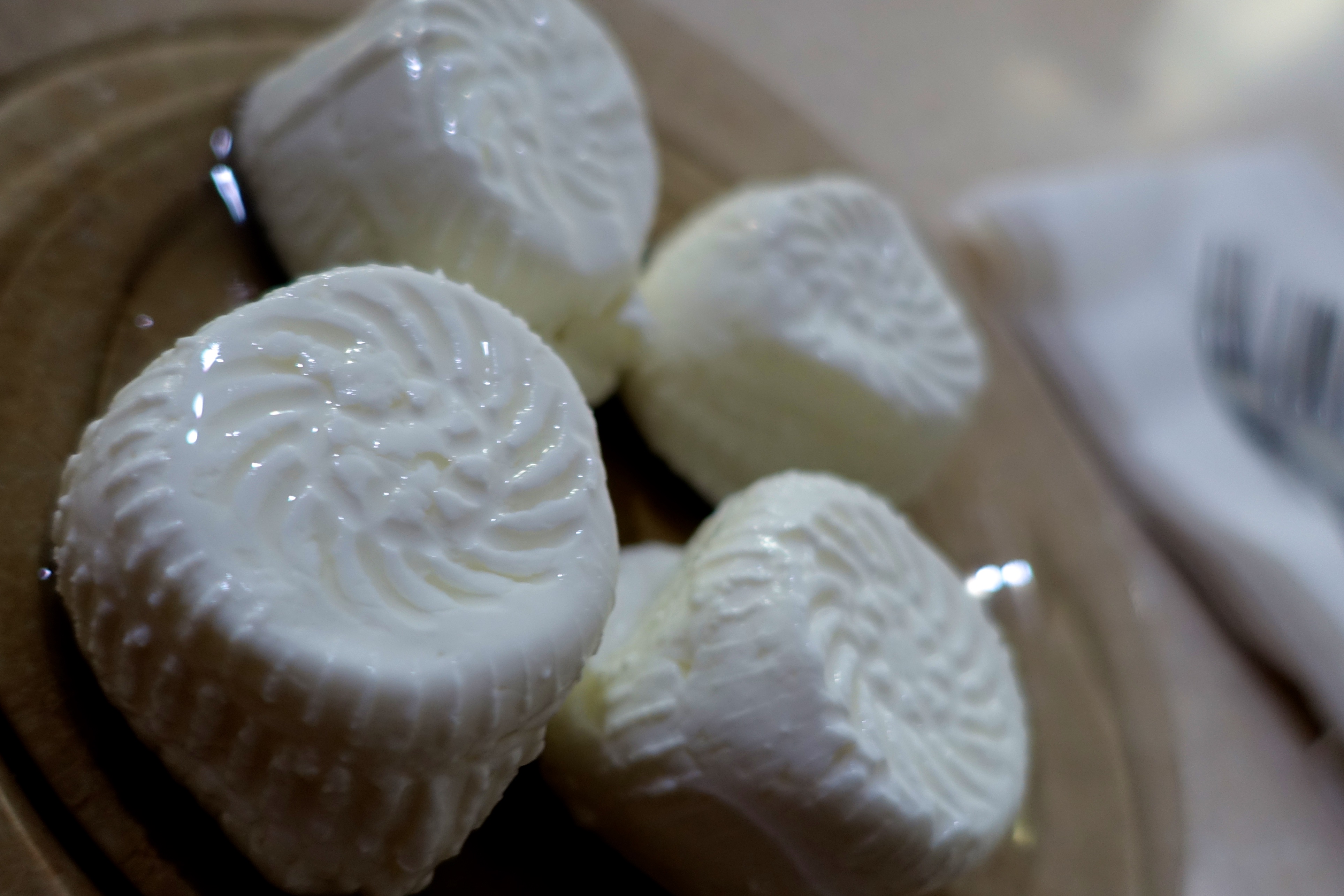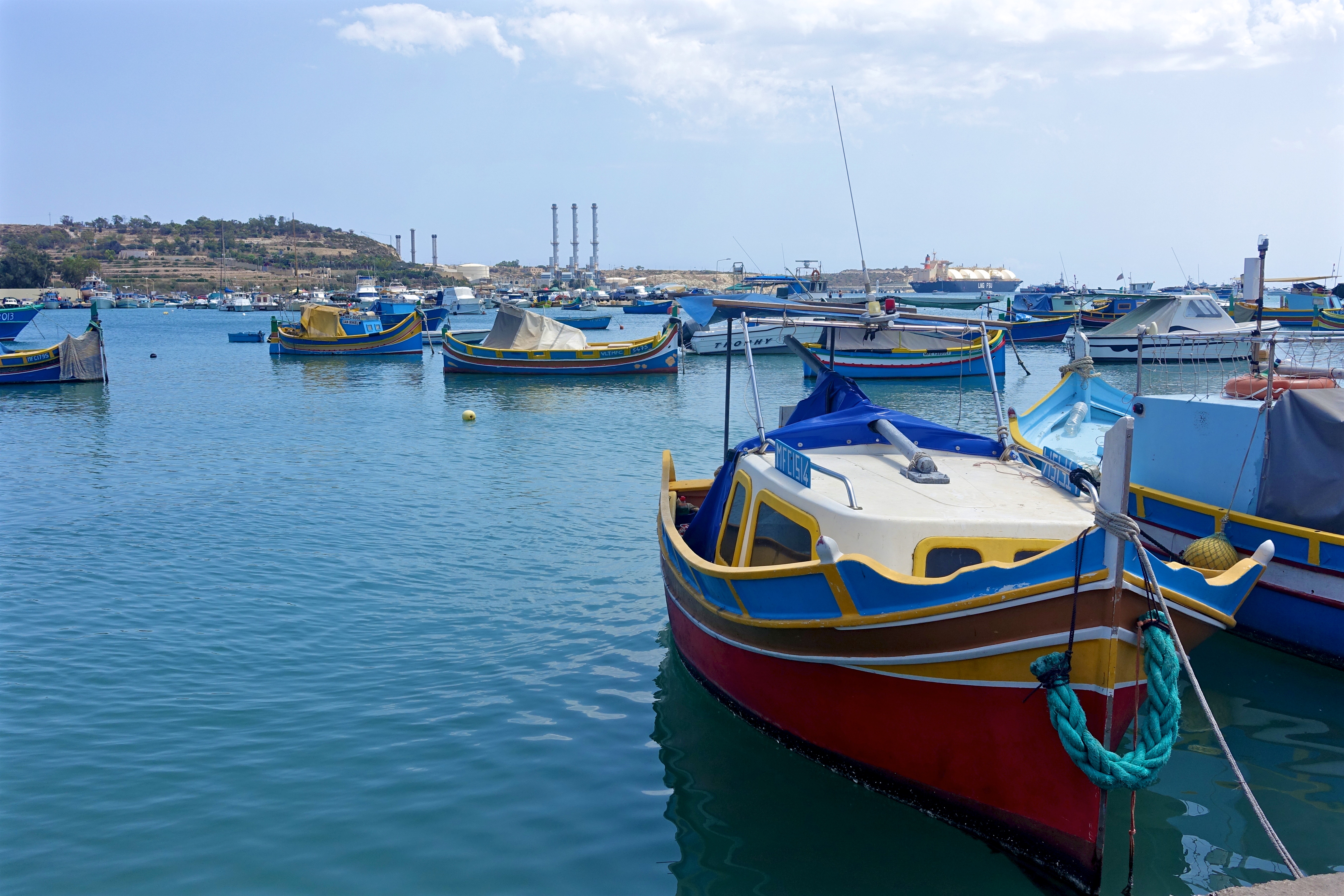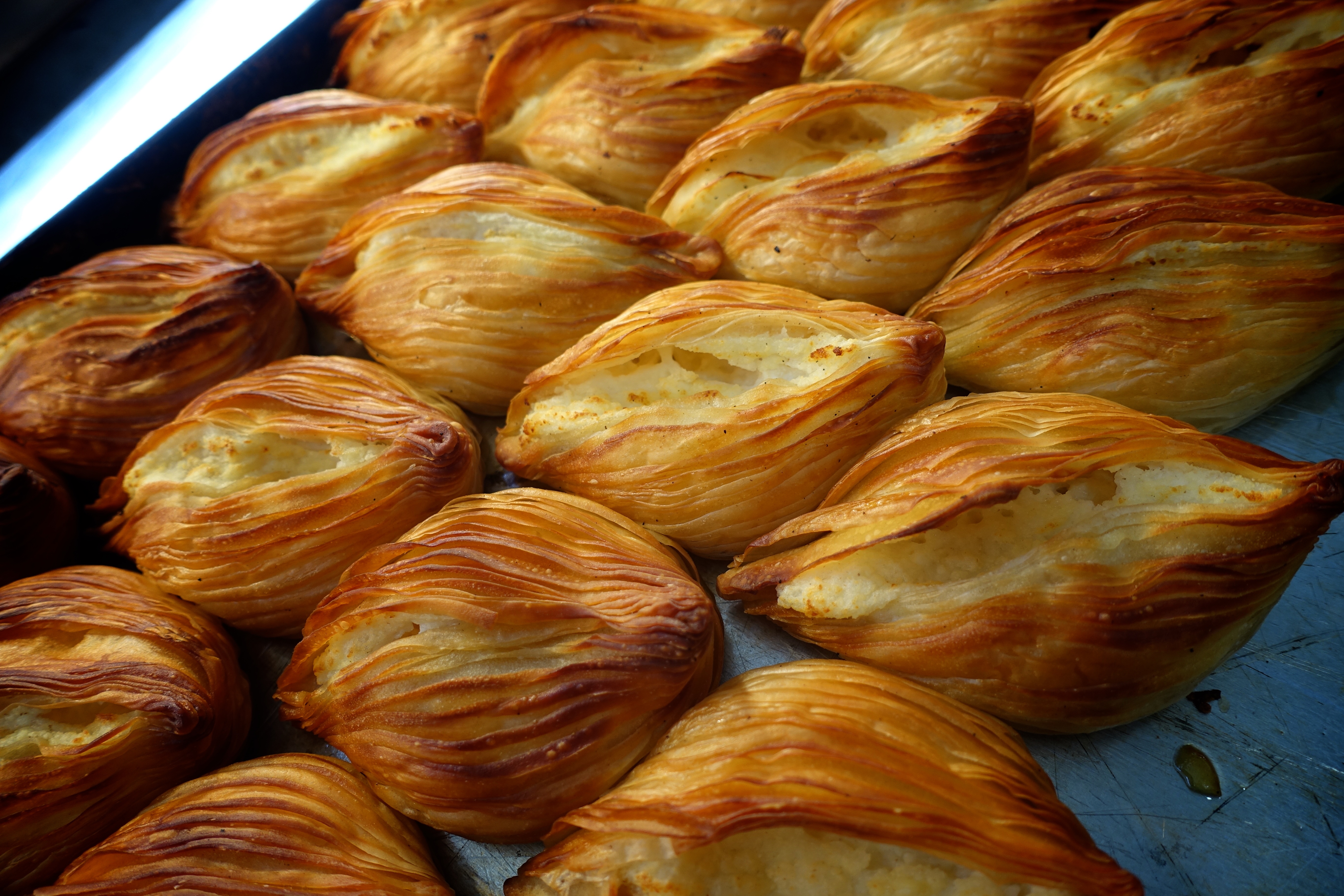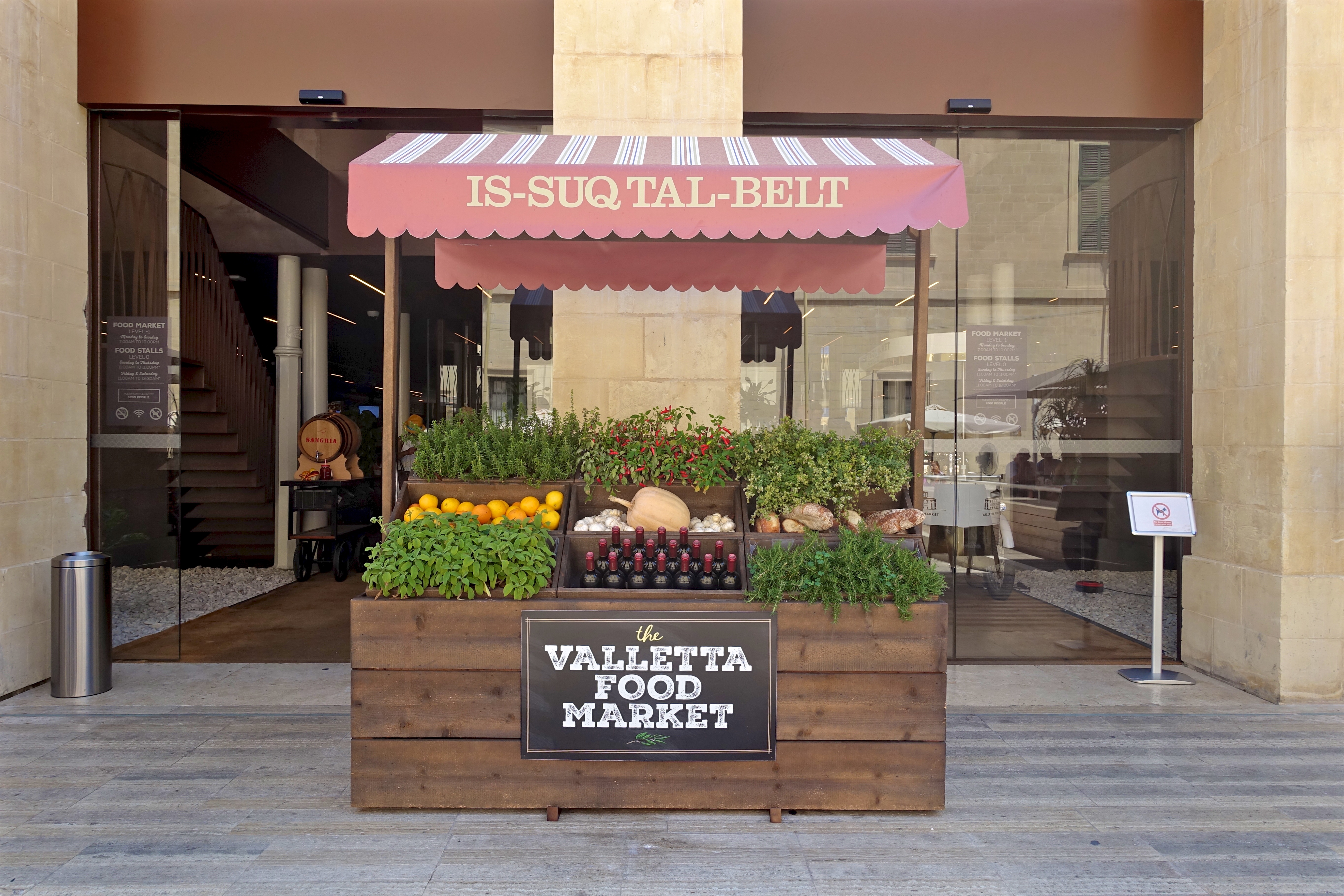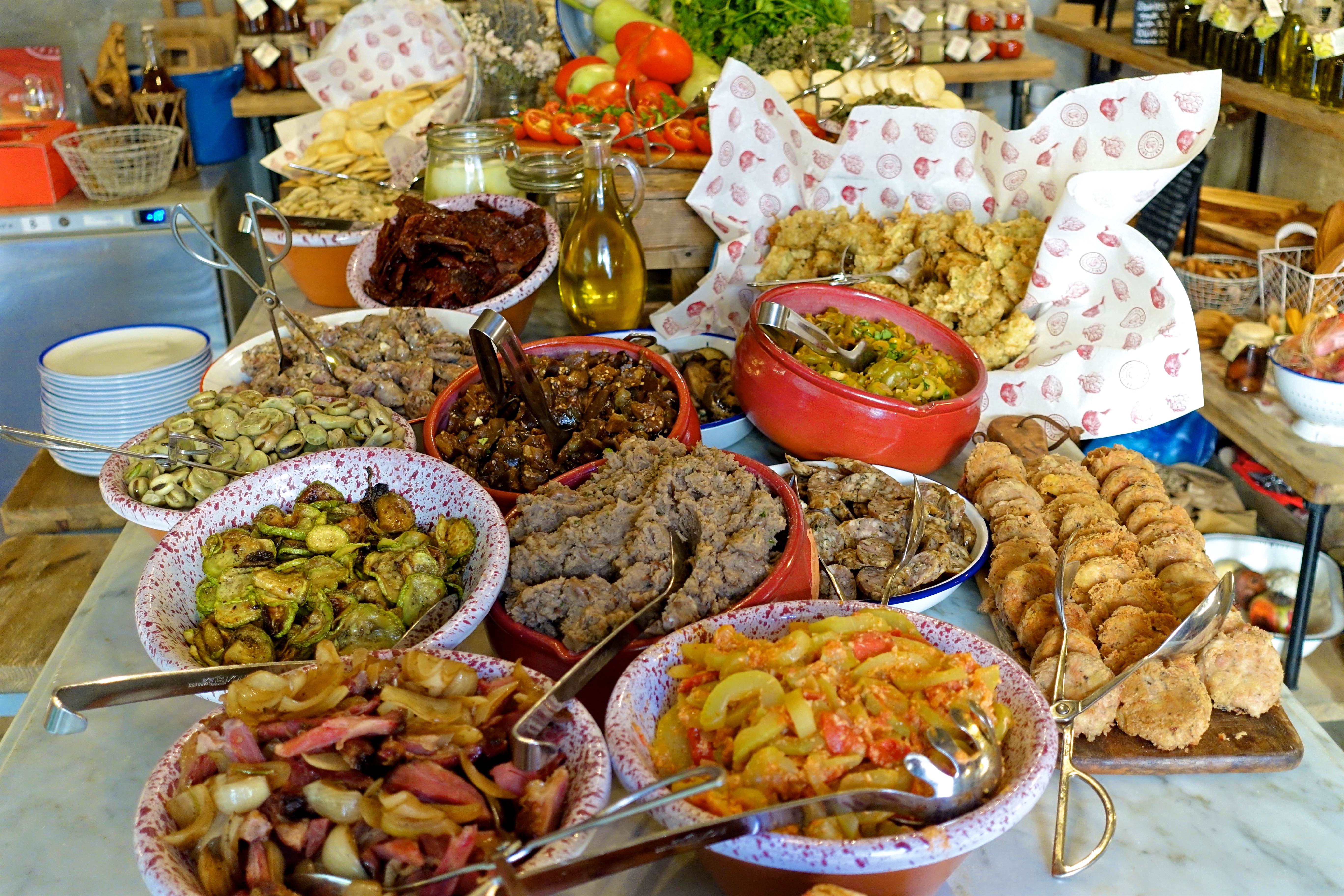Malta Is Set To Be The New Mediterranean Hotspot For Foodies
As lifelong passionate traveler, I've always been fascinated by how different parts of the world can suddenly become popular. Countries that have existed since the beginning of time can one day, become the trendiest destination on the planet, after literally being avoided for decades. One minute, a country is boring and mundane due to sitting on a largely uninhabited and baron landscape, and the next, it's beautifully tranquil and majestically serene. But despite my confusion about this, I've come to accept that the "discovery" (and I use that term rather indignantly) of hot new destinations is part of the world of travel, and moreso, the online world of travel on social media.
Enter Malta. It's quietly been plugging away in the Mediterranean, while the Greek Islands, southern France, and the Bay of Naples have performed on center stage. Due to its size alone, it's often been overlooked. I can't keep count of how many times I've been asked if Malta is its own country, or an island of another country, and not many of my own friends could tell me much about it, at all. Indeed, my own knowledge of the country in general, was limited, let alone my understanding of its food culture. Yet, mark my words – Malta is one destination that you're going to hear a lot of in the near future.
My first trip to Malta was eye opening beyond belief. I'm not exaggerating when I say that within the first thirty minutes of my arrival, I truly fell in love with the island. It has a remarkably unique charm from the combination of its captivating extensive history, its breathtaking coastline and waters, and wonderfully charismatic and hospitable people. Add to that the wildly eclectic makeup of its culture from the osmosis of so many European and north African
influences, and it's one of the most cosmopolitan and vibrant countries in Europe.
Malta's food scene is exciting in its diverse offerings. To get an insight into the must eat experiences as a first timer to Malta, I head to one of the most acclaimed hotels in the country, the Corinthia Hotel Palace and Spa. It's regarded as the country's oldest fine dining restaurant, and Executive Chef Stefan Hogan is widely recognized as being a leading authority on Maltese cuisine, the culinary icon having previously cooked for the Queen, and the Duke of Edinburgh.
Over a lunch at the Corinthia Palace Hotel and Spa's world famous restaurant, we feast down on elevated Maltese classics, and the Chef discusses why Malta's culinary landscape is so unique. "Malta has always been a coveted land," he explains. "Throughout the centuries, people have wanted to colonize the island because of its strategic geographical position. It's at the center of the Mediterranean, and we're always considered to be the crossroads between Europe and Africa, and so we do have that in our culture, in our food and cuisine."
"You can try traditional foods that have been influenced by the Venetians, the Arabs, the French, the English, the Italians – it's the bounty of the seas, the simple produce of the land we have – all cooked perfectly with lots of love and care, and Mediterranean flair. We just love having guests, people in our house, and cooking for them, it's in our genes. It's in our restaurants as well. We feel like we're cooking for friends wherever they're from."
Indeed, if you do make it to the Corinthia Palace Hotel and Spa to sample Chef Hogan's Maltese cuisine for yourself, and I strongly recommend that you do, you must order his tomato and Maltese cheese risotto. A perfectly cooked risotto, it's a direct homage to all things great about Malta's food scene. A nod to the Mediterranean culinary influence, the familiar risotto is given a delicate makeover with a wonderful balance of sweet lightness from an assembly of the island's great local varieties of vibrant tomatoes, against the saltiness of the Maltese sheep's cheese. A white wine base with tomato water is used to gently cook the rice, in a bath of delicate and fragrant aromas. Sheep's cheese is blended with the water it's set in, and added at the very end of the cooking process, resulting in a beautifully rich and deep dish with varying levels of sweet and acidic tones, grounded by the earthiness of the unobtrusively robust cheese.
It's this example of the wonderful culinary kaleidoscope that really makes up this country's thriving food scene, and why flavor obsessed travelers have started flocking to the island for a one of a kind European vacation. The wide spectrum of tastes the country yields provides offerings for all palates. There's the hearty and earthy produce from the center land of the island, contrasted against the sun kissed salty treasures of the sea, and everything in between.
Interestingly, a great deal of the food has a striking African tone about it. It's unusual to taste the herbaceous dark tones of stews seasoned with north African spices from Libya, Tunisia, Morocco, and Egypt, or cheese made served with African influenced breads. But, it's not unexpected, due to the sheer location of the country, and its ability to harness the passing flavors of the surrounding nations.
"Traditional Maltese dishes are really basic," says Hogan. "A typical Maltese dish would be a stew of vegetable with cheese and eggs – you're trying to stretch all these basic ingredients to feed all the family and make a really hearty meal out of it because they needed the energy to work the fields, or over the land, or look after the livestock, or go fishing because it was always an agricultural community."
The simplicity of Maltese dishes sings through, with a resulting emphasis on the celebration of loud, natural flavors. Rather than dishes containing an abundance of various different key ingredients and assorted embellishments, recipes are simple. They not only rely on quality, fresh produce, but also on the skillful selection of herbs and spices, cooked with traditional techniques, or as Chef Hogan puts it, "with love".
First time foodies to Malta need to dive head on into the unique local specialties
So what do tourists need to try when visiting Malta for the first time? Chef Hogan insists that there are a few favorite local foods that should be tasted to get a full Maltese experience, such as a traditional Maltese rabbit stew, long considered the national dish. It's prepared with local vegetables and herbs, brewed in a luscious dousing of red wine and tomatoes, creating a wonderfully hearty and welcoming bowl. "I think tourists also definitely need to try snails," says the Chef. "Really Maltese snails are heavy on the garlic, heavy on parsley, with lots of olive oil, so it has quite a strong taste. A lot of places tend to flavor them with a local Maltese beer. In France it would be more garlic and loads of butter, but our traditional cooking is more olive oil based, and the Maltese snails have the spices that would be prevalent in northern Africa." And the process of consuming them is also part of the experience, he explains. "Eating them is a labor of love, because you're eating them one by one with a toothpick, picking them out of the shell, mopping up the sauces with good Maltese bread. Get over being squeamish about eating snails, because they're really, really good."
Malta is a true cheese lover's paradise
The cheese. Oh, the cheese. My mouth is salivating just thinking of the satisfyingly salty, full bodied, freshly made sheeps' cheese that is iconic to the land. Known as "gbejniet" by the locals, these little round parcels of deliciousness are made from sheeps' milk, salt and rennet. It's a simple recipe, but one that relies on a constant and reliable, fresh source of sheeps' milk, and a lot of time. It's an incredibly laborious process that's all done by hand, often by farming families that have been in the industry for generations. But the all too prevalent Maltese love and care that goes into making the local bite is part of its national appeal, and the effort behind the product is widely recognized. Varieties of the cheese are found pretty much at every meal, with the fresh, dried and salted, and dried and peppered options being the most common. Personally, the dried and salted cheese is a gift from the heavens – gratifyingly briny with the perfect texture of a firmer cheese that, placed on some crackers or fresh bread, I could honestly eat for hours with a bottle of Maltese wine.
Being an island definitely has its advantages when it comes to cooking seafood
The abundance of seafood on the menus in Malta will have you dancing with the jubilant flavors of the ocean. As is expected with any island food scene, the prevalence of seafood is integral to the Maltese culture, but within the country itself, there are several places that stand out for their offerings from the ocean. Marsaxlokk, located in the southeastern region of Malta, is not only known for being an incredible focal point for the freshest seafood, but it's also one of the most breathtakingly beautiful places you'll ever visit. The clearest of blue waters wash up along a scattering of vibrantly painted fishing boats in the most charming of post card views. It's a picture of true tranquility, with rows of outdoor seating restaurants lining the wharfs offering the local catch of the day. Ta' Victor, located just a stone's throw away from the water, but distanced enough from the popular tourist tables, is a longstanding, quaint restaurant offering some of the most authentic Maltese seafood dishes, all served with the typical generosity in portions that you come to expect on the island. The owner, Chef Victor, varies his menu each day depending on what seafood is delivered by the local fisherman, and then prepares it himself in the kitchen for his loyal diners. It's a classic example of Maltese hospitality, with the Chef welcoming each guest into his restaurant, giving them a truly individual and unique dining experience that exemplifies the warm family welcome that Malta is known for.
You will not leave without feasting on baskets of breads and pastries
Forget any attempt at low carb eating in Malta – the breads and pastries are totally addictive, and the country is pumping out production of the tastiest of gluten filled bites at an incredible number. Independently owned bakeries litter the streets; you can't walk a few blocks without coming across a bustling bakery, the aroma of warm bread wafting through the air, with many of them serving as a neighborhood social hub too. Mornings are often started with a coffee and a freshly baked slice of Maltese bread, or a trip to collect the day's loaves of hobza (the popular Maltese loaf) at the very least. The emphasis is on the freshness of the daily baked bread, as hobza needs to be eaten on the day it was baked. It's Malta's version of the most perfect of sourdoughs, with a crunchy, shell like crust that shatters splendidly into the most spongey and springy of insides. It's a pillow of airy and chewy bread that's filling without being overly dense and heavy. It's the perfect vessel for olive oil, tomatoes, and capers, and after eating it, you'll understand why it's such a staple for the Maltese.
But one cannot go to Malta and not try a local pastizzi. A true national snack, this parcel of tastiness is one of the most common bites you'll find in the country, and daily consumption is pretty much a prerequisite of any stay in Malta. Flakey phyllo-like pastry is wrapped around a mixture of different fillings, the most common of them being either mushy peas or ricotta cheese. They're all made by hand, in a skillful series of twists and turns between the thumbs and fingers mastered only by the true pastry experts. It's a hypnotizing art of careful manipulation that leaves an indelible mark on each pastry – and the locals swear by their preferred pastry chefs and kitchens to deliver their daily cravings.
The Capital, Valletta, is a centerpiece for Malta's eclectic flavors
If you only have a brief amount of time in Malta (which I really hope never happens to you), and you're eager to get as concise of a taste of the country as you can in just a day, head to the capital, Valletta. Named the European Capital of Culture for 2018, the city boasts an spectacular transportation back in time, with one of the world's most concentrated historical sites. UNESCO has declared it a world heritage listed site due to the sheer number of archeological wonders still preserved in the city. It's a city overflowing with culture, not only with its historical ruins, but also through its music, its art, and of course, its food.
The restaurant scene in Valletta is diverse and established. A collection of casual eateries, upscale fine dining restaurants, and cafes and bars are sprinkled throughout the maze of the city's narrow cobblestone streets, and open air tables are bustling with street performers and hustling hosts. There's no shortage of bakeries for freshly baked hobza, or cafes for a coffee and some pastizzi, and an endless array of different bars to sample Malta's reputable wines.
A new player on Valletta's food team, however, is a must visit for any traveler in the capital. The Valletta Food Market, "Is-Suq Tal-Belt" is not only a place to sample some of the country's tastiest fare, but also a preserved doorway into the capital's fascinating past. Built in the 19th century, it's said to be the first building in Malta to be constructed mostly in iron. Bombed during World War II, the site has quite an extensive backstory, and history buffs will be captivated by the numerous displays showcasing its past. The basement of the food hall, now a gourmet supermarket for fresh local supplies and retail, sits on old prison ruins, with sections of the floor covered in glass panels revealing stone staircases leading to underground cells. Today, locals purchase pasta and fruit preserves under the arches of the old ruins, with the modern interiors of the slick supermarket tastefully reflecting its captivating history.
Upstairs, and a food court serving freshly made culinary delights awaits hungry visitors. It's Malta's food at its finest – an assembly of the whole spectrum of flavor influences from across Europe and beyond, all making up the rich tapestry that is this country's plate. From freshly caught fish that's traveled from the ocean to your table in a matter of hours, to a dedicated cheese bar with vibrant appetizer platters, the emphasis on local produce takes the spotlight. Wood fired pizza and the most delicious of gelato brings in luxurious Italian influences, and more traditional Maltese pastries are a plenty with local vendors setting up shop. The diversity in the medley of offerings under such fascinating architecture makes the market one of the most convenient and accessible ways to experience the food culture in this country.
The bounty of the island lends itself perfectly for farm to table dining
Malta has that coveted position of being able to rely on an abundance of assorted produce, from the mountains, the ocean, and the farms. It's a treasure trove for chefs like Chef Hogan, who are in turn, motivated to create inventive dishes based on traditional culinary influences. His menu at the Corinthia Palace Hotel and Spa is constantly changing with both the seasons, and the daily produce that's available, and his passion to bring a unique taste of Malta's traditional foods to guests is unmistakable in his cooking.
Diar Il Bniet, located in Dingli, on the southwestern side of the island is a local favorite for those looking for an authentic traditional Maltese meal, made with locally farmed ingredients. And by local, we're talking about a family run farm that's literally down the road, a few minutes away from the restaurant. It's simply the definition of a farm to table dining experience, set in a rustic and unpretentious dining room with an open kitchen – the closet to thing to a Maltese family table that visitors could ask for.
Over 70% of the produce served on the restaurant's menu comes directly from the family's own farm. From sun-dried tomatoes, to sweet watermelons, the local traditional rabbit, and freshly laid eggs, the menu revolves around bringing out the best in the produce that the owners' family is proud to bring to tables every night. And speaking of tables, if there's one table that encapsulates everything that's phenomenal about the Malta's farm to table dining, it's Dia Il Bniet's spectacular evening buffet spread. An endless parade of the most vibrant, freshest local delicacies are laid out with the signature Maltese pride and care, worthy of any foodie's Instagram post. Cauliflower fritters, tuna patties, grilled eggplant, and local cheese is laid out in a mesmerizing exhibition of colorful flavors, in a dining experience that you simply must experience. It's the freshest fanfare that any food lover could dream of, and a table that will give you the most rounded, and memorable taste of Malta.
Malta is indeed one unique culinary pastiche. But for me, that's what makes it such a delicious destination for the senses. It's modestly charming, and it's hard to find such a genuine and unreserved hospitality anywhere in the region. The people of Malta have a true love of sharing their great country with visitors, especially when it comes to their food, and their pride in their history and tradition is infectious. "I think Malta is blessed with a lot of things that make it a unique destination for travelers," says Chef Hogan of the Corinthia Palace Hotel and Spa. "You come here for a week, and you can go around all the island – we've got beautiful seas, good food, lots of culture, lots of history – a lot to see and absorb. And you can practically travel the Mediterranean basin, all in the space of a week, in one country, through one culture. It's a mish mash of all these cultures that have colonized us over the years, and have always put their imprint on our culture. But we've still managed to maintain our own identity and our language, and our beliefs and traditions. It's a really unique destination."
The journalist writing this article was hosted by the Malta Tourism Authority.
